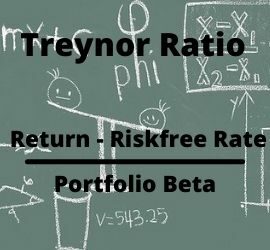What Is Backward Integration? Backward integration is a form of vertical integration. It occurs when a company expands its production role to accomplish tasks that were previously completed by companies up the supply chain. For example, a company might buy its supplier of inventory or raw materials. Merging with the […]
Financial Analysis
What is the Plowback Ratio? The plowback ratio is the percentage of earnings a company reinvests rather than paying out higher dividends. for example, buying fixed assets. This ratio is an indicator of how much profit is retained in a business instead of being paid out to the investors. It […]
What Is the Treynor Ratio? The Treynor ratio is also known as the reward-to-volatility ratio. It measures the excess returns on a portfolio against what could have been earned on an investment with no diversifiable risk. In other words, it is a performance metric for determining how much excess return […]
What Is the Security Market Line? The security market line (SML) is a theoretical representation of the expected returns of assets based on systematic, non-diversifiable risk. The security market line (SML) is a line investors calculate and plot on a trading chart. It serves as a graphical representation of the […]
What Is a Ledger Balance? A ledger balance is usually computed by a bank at the end of each business day. It includes all withdrawals and deposits to calculate the total amount of money in a bank account. In many cases, it is also the opening balance in the bank […]
What Are Flotation Costs in Finance? Flotation costs are non-recurring expenses that are paid to third parties to facilitate the issuance of new securities in the market. Flotation costs are incurred by publicly-traded companies when they issue new stock. They incur expenses, such as underwriting fees, legal fees, and registration […]






